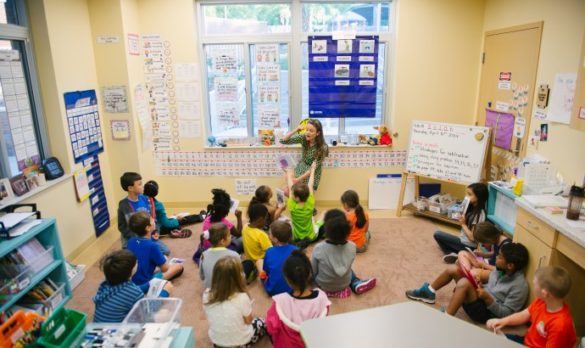By Kieran McCartan, PhD., & David Prescott, LISCW
The annual NOTA conference took place from the 18th – 20th September in Belfast. NOTA, the National Organisation for the Treatment of Abuse, is a long-time partner to ATSA. This year’s conference was a real mix of research, practice, and engagement with over 300 colleagues from across the UK, Ireland and internationally in attendance (with attendees and speakers from a range of countries including the USA, Gibraltar, Norway, Ireland, and from all four countries of the UK). The conference focused on abuse within and across systems, with even Brexit getting a mention. In this blog, we are going to take you on a whistle-stop tour of the event.
The 2019 plenaries combined research, practice and innovate approaches from a very broad group of speakers. The Conference started on Wednesday with Professor Teresa Gannon presenting the findings of her recent meta-analysis, which included this year’s HMPPS report, on the effectiveness of treatment programs for men convicted of a sexual offence. The headlines from Professor Gannon’s presentation was that treatment does have a positive effect on behaviour change, including recidivism, compared to none and that the role of consistent, well trained and engaged providers is important. Following on from this we had a “conversation with Karl Hanson” whereby Professor Don Grubin discussed with Karl a combination of pre-submitted audience questions and his own thoughts. The topics ranged from risk assessment, treatment, risk management, and professional practice; it was an insightful alternative to a traditional keynote that allowed participants to gain more of an insight into Karl’s work and thinking. The Thursday started with a keynote from Professor Anne-McAlinden on peer-to-peer abuse, based on NOTA research committee funded work (a good reminder of the annual research grant scheme that was also launched at the conference), which indicated that we need to potentially reconceptualize risk in the context that young people live and doing so would enable us to prevent as well as respond to sexual abuse better. The was followed by a trio of Ireland based practice initiatives which where focused on children who committed sexual harm and/or engagement with their families (Carol Carson talking about AIM 3; Rhonda Turner talking about the work of the National Inter Agency Prevention Program; and Gareth McGibbon talking about the development of the Capacity & Ability to Supervise and Protect Framework [CASP]), all of which demonstrated best practice and a series of tools that conference attendees could take home with them. The final day of the conference opened with Professor Erick Janssen discussing research on sex, emotion and risk, followed by a roundtable of police experts (from England, Ireland, Wales, Scotland, Northern & Gibraltar) on the potential impact of Brexit on cross border co-operation and data sharing. The roundtable was fascinating and raised several questions about the impact of a no-deal Brexit and the issues that changing data sharing agreements would have on risk management, background checks, and deportation. The conference closed with a powerful and very relevant piece by the Geese theatre group examining the interactions of abuse within the family system and how it spills into other closely aligned systems (school, sport and the community)..
The conference had 40 parallel sessions with over 50 speakers across the Wednesday and Thursday afternoon, spanned a full range of topics and speakers (of which this is just a flavor) including, integration of people who have sexually offended back into the community (Public Protection Arrangements Northern Ireland), people who have committed sexual abuse as service users and hearing their views (Kieran McCartan, David Prescott; Lynn Saunders; Karen Martin), trauma-informed care (Catherine Gallagher, Maggie Tai Rakena); youth who sexually harm (Carol Carson; treatment (David Briggs; Adam Deming; TUSLA; AIM project Eleanor Woodford & Ben Evans; Gallagher; Geraldine Akerman); sibling sexual abuse (Jacqueline Page; Melissa Maltar, Nancy Falls): 3 sessions dedicated to research and another on important issues for practitioners in critically engaging with research by the research committee.
The workshops were a good mix of research, evaluation, practical working, professional learning and knowledge exchange.
In addition to the traditional conference activities NOTA 2019 also had an engagement event that was open to all co-organised with Public Protection Arrangements Northern Ireland and took place away from the conference site. We advertised the engagement event to professionals who have safeguarding as part of their jobs, but that safeguarding is not their main role (and therefore would not be attending the NOTA conference) including, teachers, foster carers, members of charities and NGO’s, etc. We had 60 participants sign up to attend the event, all of whom attended. The session heard from national (DSI Paula Hamilton, Julie Smyth & Kieran McCartan) and international (Eileen Finnegan & Maia Christopher) speakers about the aetiology, prevention and risk management of people convicted of sexual offences in the community.
NOTA 2019 saw Professor Simon Hackett step down as Chair of NOTA and Professor Sarah Brown take over the role. Unfortunately, Simon could not be in Belfast with us but his contribution to the organisation was applauded in his absence and he was thanked for all his hard work. Also, NOTA 2019 was Gail McGregor’s last conference as conference chair and she too was thanked for all her hard work.
NOTA 2019 fitted a massive amount of material in across three days, which left us informed, refreshed and looking forward to next year’s meeting in Leeds.







